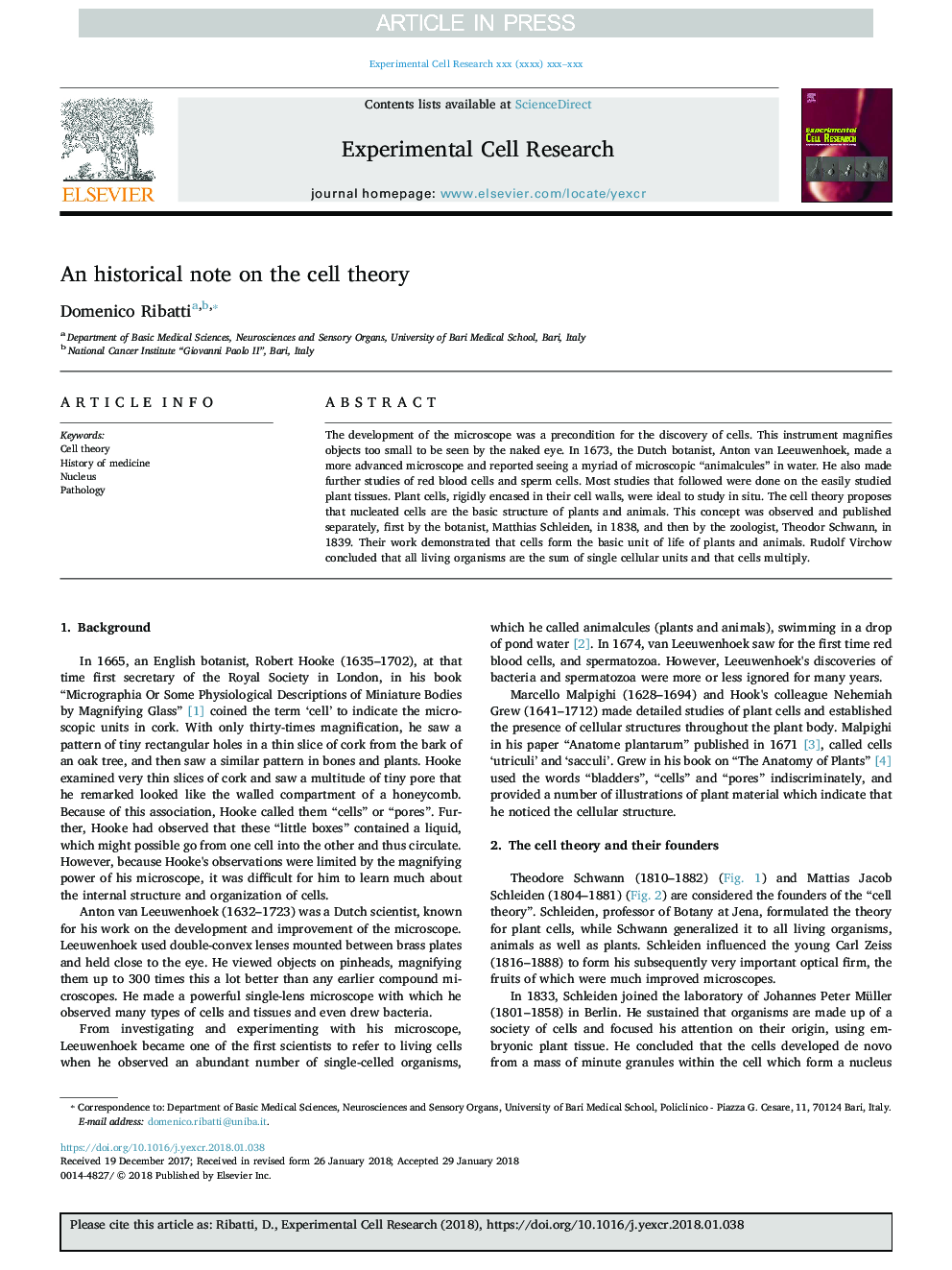| کد مقاله | کد نشریه | سال انتشار | مقاله انگلیسی | نسخه تمام متن |
|---|---|---|---|---|
| 8451157 | 1547693 | 2018 | 4 صفحه PDF | دانلود رایگان |
عنوان انگلیسی مقاله ISI
An historical note on the cell theory
ترجمه فارسی عنوان
یادداشت تاریخی در نظریه سلول
دانلود مقاله + سفارش ترجمه
دانلود مقاله ISI انگلیسی
رایگان برای ایرانیان
کلمات کلیدی
نظریه سلولی، تاریخ پزشکی هسته، آسیب شناسی،
موضوعات مرتبط
علوم زیستی و بیوفناوری
بیوشیمی، ژنتیک و زیست شناسی مولکولی
تحقیقات سرطان
چکیده انگلیسی
The development of the microscope was a precondition for the discovery of cells. This instrument magnifies objects too small to be seen by the naked eye. In 1673, the Dutch botanist, Anton van Leeuwenhoek, made a more advanced microscope and reported seeing a myriad of microscopic “animalcules” in water. He also made further studies of red blood cells and sperm cells. Most studies that followed were done on the easily studied plant tissues. Plant cells, rigidly encased in their cell walls, were ideal to study in situ. The cell theory proposes that nucleated cells are the basic structure of plants and animals. This concept was observed and published separately, first by the botanist, Matthias Schleiden, in 1838, and then by the zoologist, Theodor Schwann, in 1839. Their work demonstrated that cells form the basic unit of life of plants and animals. Rudolf Virchow concluded that all living organisms are the sum of single cellular units and that cells multiply.
ناشر
Database: Elsevier - ScienceDirect (ساینس دایرکت)
Journal: Experimental Cell Research - Volume 364, Issue 1, 1 March 2018, Pages 1-4
Journal: Experimental Cell Research - Volume 364, Issue 1, 1 March 2018, Pages 1-4
نویسندگان
Domenico Ribatti,
